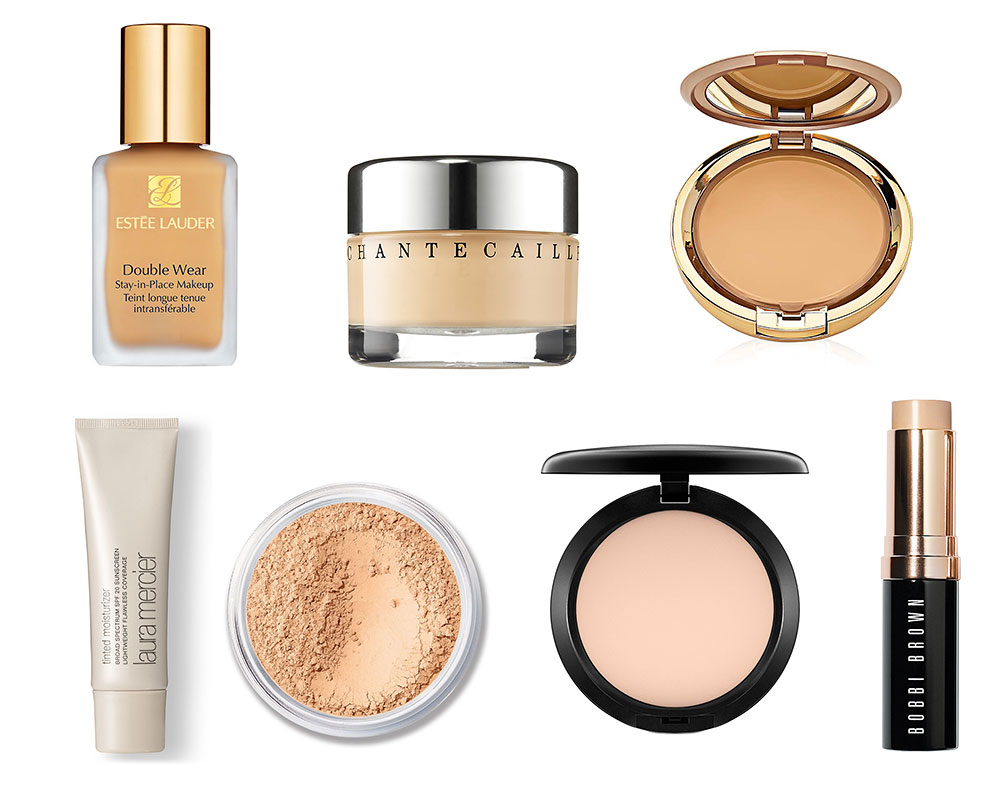Types of Foundation Makeup
Use the appropriate formulation for your skin type and the desired coverage and finish
-
Liquid: Liquid is the most popular formulation for foundation or base makeup. Liquid foundations usually come in a bottle, although cushion foundations are a form of liquid foundation that come in a compact, and some liquid foundations come in a tube. Liquid foundations are a good choice for any skin type, although they may cling to very dry patches of skin.
Liquid foundations can provide coverages that range from sheer (almost undetectable) to full coverage (covering all skin blemishes and surface skin features such as freckles and moles). Liquid foundations can have finishes ranging from matte (with no light reflection or shine) to dewy (somewhat shiny and light reflective) to satin (in between matte and dewy). Liquid foundations also tend to wear the longest of all of the major foundation types.
Truly, liquid foundations are the chameleon of the foundation world. Anyone with any skin type can find a liquid foundation to suit them if they look long enough.
Apply liquid foundation with your fingers, a sponge, or a brush. Thinner liquid foundations will apply easier with your fingers or a sponge, while thicker foundations will probably apply better with damp sponge or a brush.
-
Cream: Cream foundations are obviously thicker than liquid foundations and typically come in a tube, stick, or pot. Some cream foundations are so thick that they may need to be warmed or massaged with your fingers a bit before application. Some cream foundations double as concealers.
Cream foundations suit those with dry to very dry skin, as they are usually formulated on an oil base. A few cream foundations are formulated on a water base, however, and are suitable for those with normal to combination skin. Cream foundations tend to provide medium to full coverage and are best applied with a brush, although using a damp sponge after initial application can sheer out the initial coverage.
Cream foundations offer a satin to dewy finish, but using setting powder after application can help to minimize the shine if it is too much.
Cream foundations are generally best avoided by those with very oily skin, and tend to wear off faster than liquid foundations. They are generally more convenient to carry around and travel with than liquid foundations, however.
-
Powder: Powder foundations include the popular "mineral" foundations. Powder formulations suit those with normal to oily skin, as they serve the dual purpose of not only evening skin tone but controlling shine by absorbing oil.
Powder foundations come in either loose or pressed varieties. Loose powder foundations tend to provide sheer to medium coverage, while the pressed powder varities provide fuller coverage. Loose powder foundations may just be made up of pigments such as iron oxides mixed with talc, corn starch, or mica, while compact powder foundations may have a wider range of ingredients, including binders and small amounts of moisturizers such as oils. Powder foundations provide matte finishes, not dewy or satin finishes.
Loose powder foundation should be applied lightly with a brush or a puff and all excess should be dusted off the face. Compact powder foundations can be applied with a brush or puff as well, but more product can be applied to the face with more of a pressing motion.
Powder foundations should be avoided by those with dry skin or excessive facial lines, as the powder, especially loose powder, will collect in creases and lines and will only make dry skin look more dry. Powder foundations tend to last longer than cream foundations but again, not as long as liquid foundations. Powder foundations are again more genereally more convenient to travel with than liquid foundations.
More Information on Even More Types of Foundation Makeup
 ;
;
Coded by Adrienne Millican